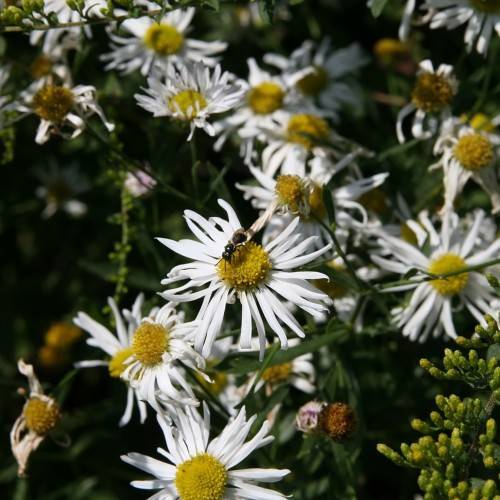
Aster Like Boltonia
Boltonia asteroides var. recognita
Also Known As - False Aster,White Doll's DaisyWatering:
Average
Hardiness Zone:
Flowers:
Flowers
Sun:
Sun, Partial Shade
Soil:
Sand, Loam
Leaf:
Yes
Growth Rate:
Low
Salt Tolerant:
Yes
Care Level:
Moderate
watering
Aster Like Boltonia (Boltonia asteroides var. recognita) should be watered every 1 to 2 weeks, to keep the soil moist but not soggy. Water deeply and thoroughly to the bottom of the root system, and then allow the soil to dry out slightly before watering again. During the summer, additional water may be necessary if the weather has been dry. During the winter, the plant can be checked monthly to see if it needs additional moisture.
sunlight
Aster like Boltonia (Boltonia asteroides var. recognita) is best grown in an area with full sun to light shade. It will tolerate any type of soil, and is relatively drought tolerant once established. It is ideal for gardens in USDA growing zones 4 to 8. In the warmer months of spring and summer, Aster Like Boltonia should receive 5 to 6 hours of direct sunlight each day from mid-morning through late afternoon. In the cooler months of fall and winter, the plant will benefit from receiving 2 to 3 hours of direct sunshine a day. It is important to make sure your plant has shelter from strong, hot late afternoon sun to improve its bloom.
pruning
Pruning an Aster Like Boltonia (Boltonia asteroides var. recognita) should be done at least once a year, typically in late winter to early spring. Begin by removing any dead or damaged stems with clean pruning shears. After removing dead or damaged shoots, prune the healthy shoots to the desired shape and height. It is important to note, however, that Boltonia should not be pruned back too drastically as it will result in slow regrowth. In areas with mild winters, deadheading in late summer may also be necessary.
